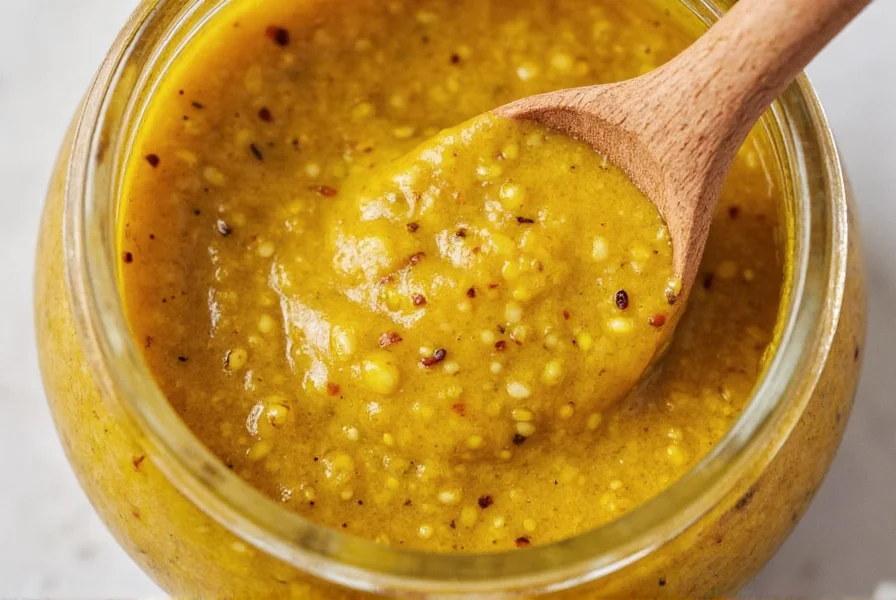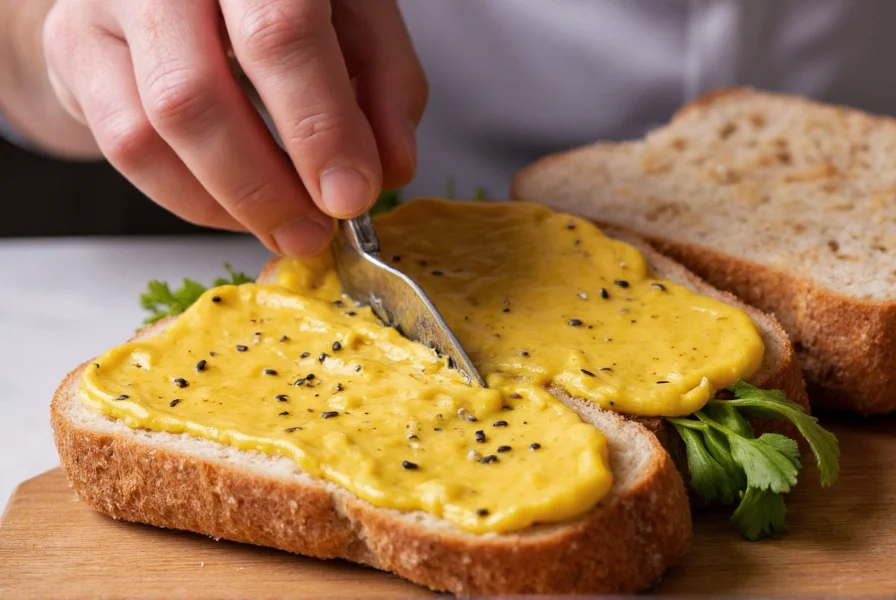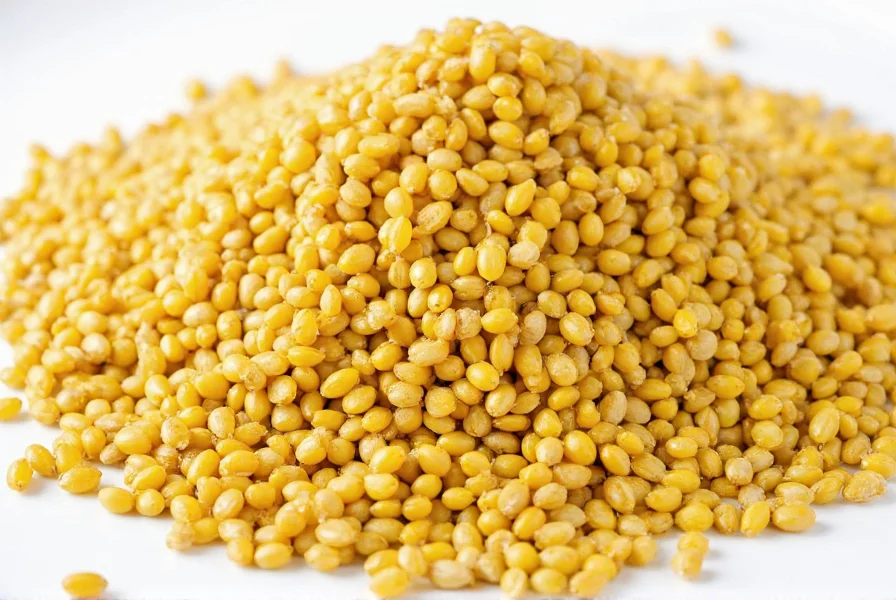Mustard with seeds represents one of the most traditional forms of this ancient condiment, maintaining its popularity among chefs and home cooks seeking authentic flavor and texture. This coarse preparation method dates back centuries, preserving the integrity of the mustard seeds while delivering a distinctive culinary experience that smooth mustards cannot replicate.
What Makes Mustard with Seeds Unique
The defining characteristic of mustard with seeds lies in its preparation process. Rather than fully grinding the mustard seeds into a homogeneous paste, producers intentionally leave some seeds whole or only partially crushed. This technique creates a condiment with visible seed particles that provide bursts of flavor and subtle crunch. The seeds themselves contain essential oils that release slowly when bitten, creating a more complex flavor journey compared to smooth mustards where these oils disperse uniformly.
Most commercial mustard with seeds varieties use a combination of yellow, brown, and black mustard seeds, each contributing different flavor notes. Yellow seeds offer mildness, brown seeds provide medium heat, and black seeds deliver the most pungent kick. The ratio of these seeds determines the final product's heat level and complexity.
Traditional Preparation Methods
Artisanal mustard with seeds typically follows time-honored preparation techniques that maximize flavor development. The process begins with soaking mustard seeds in liquid (usually vinegar, wine, or water) for 24-48 hours. This hydration activates enzymes that develop the characteristic pungency when the seeds are later ground.
| Mustard Seed Type | Flavor Profile | Common Usage |
|---|---|---|
| Yellow Mustard Seeds | Mild, slightly tangy | American-style mustards, ballpark mustard |
| Brown Mustard Seeds | Medium heat, earthy | Dijon-style, whole grain mustards |
| Black Mustard Seeds | Strongest heat, pungent | Traditional European mustards, Indian cuisine |
After soaking, producers grind only a portion of the seeds while leaving others intact. The grinding process controls the mustard's heat level—more grinding creates more heat as it releases more enzymes. Mustard makers then blend the partially ground mixture with vinegar, salt, and sometimes additional flavorings like garlic, herbs, or spices before bottling.
Culinary Applications of Mustard with Seeds
The texture and flavor complexity of mustard with seeds make it particularly valuable in specific culinary applications. Chefs favor this variety for:
- Sandwiches and burgers - The visible seeds add visual appeal while providing textural contrast to soft bread and meats
- Marinades for meats - The coarse texture helps the marinade adhere better to proteins
- Vinaigrettes and dressings - Seeds create natural emulsification and add interest to salads
- Roasted vegetable accompaniments - Complements the caramelized flavors of root vegetables
- Charcuterie boards - Serves as an artisanal condiment alongside cured meats and cheeses
When substituting mustard with seeds in recipes calling for smooth mustard, consider that the texture will alter the final dish's mouthfeel. For applications requiring a uniform texture (like mayonnaise-based sauces), traditional mustard with seeds may not be ideal unless finely processed first.
How Mustard with Seeds Differs from Similar Varieties
Many consumers confuse mustard with seeds with other coarse mustard varieties. Understanding these distinctions helps in selecting the right product:
- Whole grain mustard - Contains predominantly whole or very coarsely crushed seeds, often with visible grains making up 30-50% of the mixture
- Seeded mustard - Typically has fewer visible seeds (10-25%) with a smoother base
- Country-style mustard - An American term often used interchangeably with whole grain, though sometimes indicates a sweeter preparation
- Dijon mustard with seeds - Features the sharp tang of Dijon mustard but with added seed texture
The European Union protects the term "Dijon" for mustards produced in the Dijon region of France using specific methods, though many global producers use the term generically. Authentic Dijon mustard traditionally contains no visible seeds, making "Dijon with seeds" a modern adaptation rather than a traditional preparation.
Nutritional Profile and Health Considerations
Mustard with seeds offers similar nutritional benefits to smooth mustard but with some distinctions due to the intact seeds. A typical serving (1 tablespoon) contains:
- Negligible calories (approximately 5-10 per serving)
- Zero fat content
- Minimal carbohydrates
- Small amounts of protein and fiber from the intact seeds
- Trace minerals including selenium, magnesium, and calcium
The intact seeds in mustard with seeds provide slightly more dietary fiber than smooth varieties, as the seed husks remain undigested. Mustard seeds also contain glucosinolates, compounds being studied for potential anti-inflammatory properties. However, the quantities in typical mustard consumption are too small to provide significant health benefits.
Those with mustard allergies should exercise caution with mustard with seeds, as the intact seeds contain higher concentrations of allergenic proteins. Individuals with digestive sensitivities may also find the coarse texture more challenging to process than smooth mustard.
Storage and Shelf Life Considerations
Proper storage significantly impacts the quality and longevity of mustard with seeds. Unlike smooth mustard where ingredients remain uniformly distributed, the seeds in coarse mustard can settle over time. Follow these storage guidelines:
- Always refrigerate after opening to maintain flavor integrity
- Store in original container with tight-sealing lid to prevent moisture loss
- Shake or stir before each use to redistribute settled seeds
- Use clean utensils to prevent contamination
- Consume within 6-8 months of opening for optimal flavor
Signs of spoilage include mold growth (particularly on the surface where seeds collect), significant darkening of color, or development of off-odors. The vinegar content in most commercial mustards creates an acidic environment that naturally inhibits bacterial growth, making spoilage relatively rare when properly stored.
Homemade Mustard with Seeds Preparation
Creating homemade mustard with seeds allows complete control over ingredients and texture. A basic recipe follows:
- Combine 1/2 cup mixed mustard seeds (yellow, brown, black) with 1/2 cup liquid (white wine, beer, or vinegar) and let soak for 24 hours
- Add 1/4 cup additional liquid, 1 teaspoon salt, and optional flavorings (garlic, herbs, spices)
- Grind mixture in food processor until desired consistency (some seeds whole, others partially crushed)
- Transfer to jar, seal, and refrigerate for at least 48 hours before use to allow flavors to develop
- Stir before each use as seeds will settle during storage
The soaking time significantly impacts the final heat level—shorter soaks (12 hours) yield spicier mustard as fewer enzymes deactivate, while longer soaks (48+ hours) create milder flavor. Adjust liquid types to influence flavor: wine adds fruitiness, beer contributes malt notes, and vinegar provides sharp acidity.

Common Misconceptions About Mustard with Seeds
Several myths persist about mustard with seeds that deserve clarification:
- "Mustard with seeds is always hotter" - Seed visibility doesn't necessarily indicate heat level, which depends more on seed variety and preparation method
- "All coarse mustards are the same" - Significant differences exist between whole grain, country-style, and seeded varieties
- "Mustard with seeds doesn't expire" - While shelf-stable when unopened, quality degrades after opening without proper refrigeration
- "The seeds are just for decoration" - Intact seeds actively contribute flavor and texture throughout consumption
Understanding these distinctions helps consumers make informed choices based on actual culinary needs rather than assumptions about seeded mustard products.
Conclusion
Mustard with seeds offers a distinctive culinary experience that bridges tradition and modern gastronomy. Its visible seeds provide not just visual interest but actual textural and flavor benefits that smooth mustards cannot replicate. Whether used in classic preparations or contemporary recipes, this versatile condiment enhances dishes with its complex flavor profile and rustic appeal. By understanding its characteristics, proper usage, and storage requirements, home cooks and professional chefs alike can maximize the culinary potential of this time-honored condiment.

What's the difference between whole grain mustard and mustard with seeds?
Whole grain mustard typically contains a higher percentage of visible seeds (30-50%) with a coarser texture, while mustard with seeds generally has fewer visible seeds (10-25%) in a smoother base. Whole grain varieties often feature more pronounced seed texture and may use traditional European preparation methods, whereas mustard with seeds frequently refers to American-style preparations with moderate seed content.
Can I substitute mustard with seeds for smooth mustard in recipes?
Yes, but with considerations. Mustard with seeds works well in recipes where texture enhances the dish (like marinades, roasted vegetables, or sandwiches), but may not be ideal for applications requiring smooth consistency (such as mayonnaise-based sauces or delicate dressings). When substituting, you may want to process the mustard with seeds briefly in a food processor if a smoother texture is needed for your specific recipe.
Why does mustard with seeds separate in the jar?
Separation occurs because the mustard seeds are denser than the liquid base, causing them to settle over time. This is natural and doesn't indicate spoilage. Simply shake the container vigorously or stir with a clean utensil before use to redistribute the seeds. Properly stored mustard with seeds may separate less frequently if kept refrigerated after opening.
Does mustard with seeds have more health benefits than smooth mustard?
Mustard with seeds contains slightly more dietary fiber due to the intact seed husks, but the nutritional differences are minimal. Both varieties are low-calorie, fat-free condiments. The primary difference is textural rather than nutritional, as the health compounds in mustard seeds (like glucosinolates) are present in similar concentrations regardless of whether the seeds are whole or ground.
How long does mustard with seeds last after opening?
When properly refrigerated after opening, mustard with seeds maintains optimal quality for 6-8 months. The vinegar content acts as a natural preservative, but flavor gradually diminishes over time. Always check for signs of spoilage like mold growth, significant darkening, or off-odors before use. Stirring settled seeds back into suspension can extend usability, but discard if any spoilage indicators appear.











 浙公网安备
33010002000092号
浙公网安备
33010002000092号 浙B2-20120091-4
浙B2-20120091-4